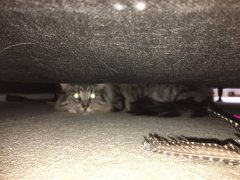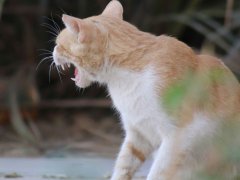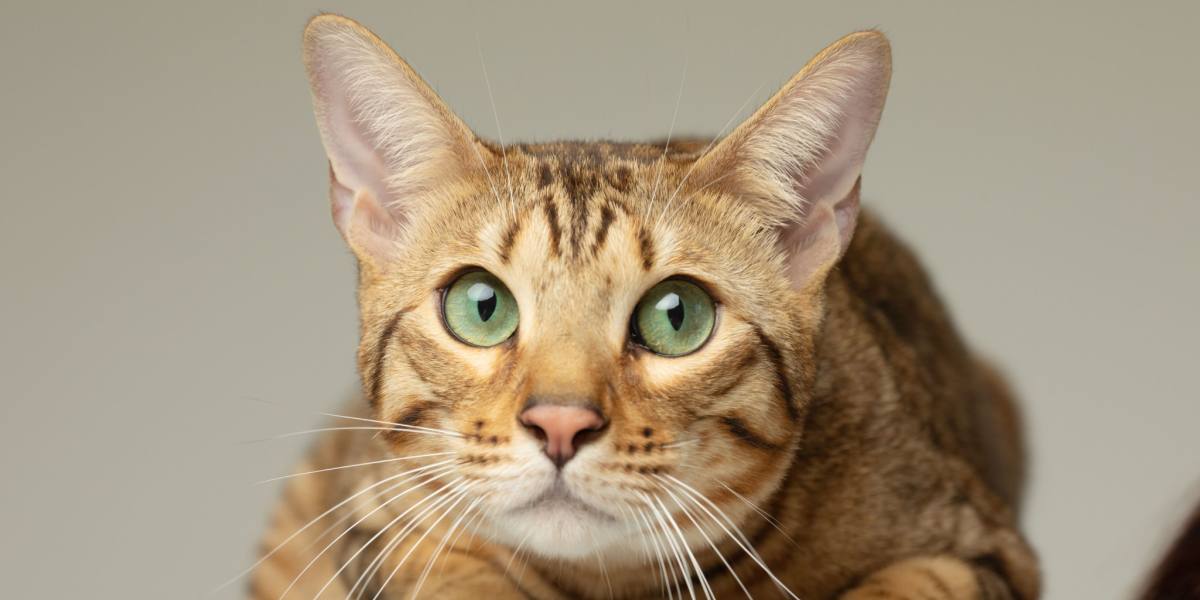
There is nothing better than kitty cuddles. However, sometimes your cat might be excessively demanding your attention. If this happens from time to time, there is likely nothing amiss. However, if your cat is constantly seeking your attention, especially if this is a new behavior, it might mean there is a problem.
If a cat suddenly becomes more clingy when previously they weren’t, it can signify a medical or behavioral problem. It's important to determine whether your cat is begging for food or attention. If your cat has a significant increase in appetite or a substantial change in character schedule a checkup with your veterinarian.Key Takeaways
In this article, we will discuss the reasons your cat might suddenly be craving extra attention from you and what you should do about it.
Why Is My Cat Seeking My Attention?
There are many different reasons why your cat might choose to be more persistent when seeking out your affection. These can be better categorized into whether your cat is begging for food or attention.
While this list isn’t exhaustive, it covers the most common reasons your cat may become more desperate for attention.
Begging for Food
Some cats are naturally greedy, but if you have noticed your cat is beginning to ask for food or a treat more frequently, or has suddenly developed a voracious appetite, this can be a sign of a problem. Examples include:
1. Multi-Cat Food Competition
Resource guarding can become a subtle but significant way cats fight or assert dominance if you have several cats in your home. You may not see outright aggression or disagreement between your cats, but a less dominant cat may feel uncomfortable accessing the food.
This can be especially true if your cats share a food bowl or all food bowls are in the same part of the house. Resource guarding can even happen when cats are with their sibling. As a general rule, you should have n+1 of every resource in the house, where n is the number of cats you own. For example, three cats need four food bowls, four litter trays, etc.
These resources should be spread around the house and not grouped together. This allows everyone access to what they need without feeling worried or anxious.
2. Hyperthyroidism
Hyperthyroidism, also called “thyrotoxicosis,” is a disease seen more commonly in adult cats, typically middle-aged to older cats. It is caused due to the body overproducing thyroid hormones. Thyroid hormones are essential in maintaining a normal basal metabolic rate (the number of calories your cat’s body burns at rest).
Too much thyroid hormone leads to increased energy consumption. Signs of hyperthyroidism include increased appetite, weight loss, and increased thirst. Affected cats may also show hyperactivity, increased vocalization, or even aggression. Your cat’s fur may appear unkempt.
If you think your cat is showing these signs, make an appointment with your veterinarian, who will talk you through the steps to diagnosis and available treatment options.
3. Parasitism
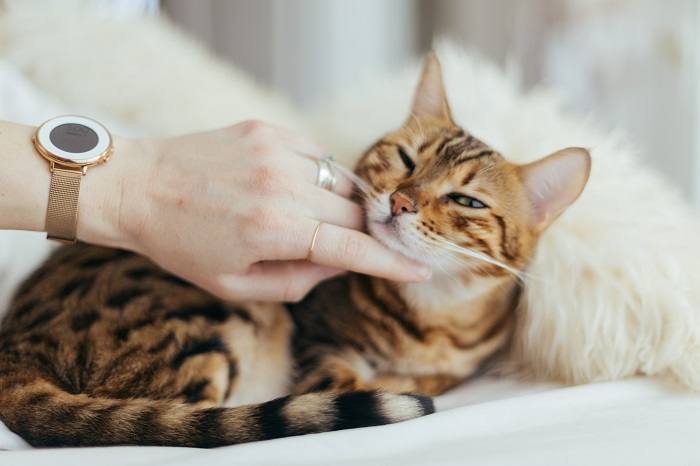
Parasite infection can cause cats to feel hungry all the time.
Cats can be affected by many types of parasite infections, including worms. Gastrointestinal worms, those living in the gut, can lead to reduced calories available for your cat or disrupt the body’s ability to absorb those nutrients.
This can, in turn, lead to increased appetite and weight loss. Parasitic disease is more common in kittens but can affect animals of any age. If your cat is not routinely treated for worms, consider speaking to your veterinarian for advice, especially if you notice your cat begging for food.
4. Diabetes Mellitus
Just like people, cats can be affected by sugar diabetes. In cats, the most common type of diabetes results from their body becoming resistant to the sugar-regulating hormone insulin. Being overweight or obese is a risk factor for diabetes in cats.
Symptoms include increased appetite, increased thirst, and weight loss. Diabetes can be a life-threatening condition if not diagnosed and treated promptly, so if you notice these signs, don’t put off speaking to your vet.
5. Inflammatory Bowel Disease
Inflammatory bowel disease (IBD) is a complicated and incompletely understood spectrum of diseases that essentially lead to the gut wall becoming inflamed. The exact reason is not fully understood, even in human medicine, but is thought to be a combination of autoimmune issues, genetics, food intolerance, and gut bacteria disruption. It can lead to diarrhea, vomiting, and weight loss in cats.
They may also show signs of increased appetite. Your veterinarian will be able to talk you through the steps needed to reach a diagnosis and the treatment options if your cat is suspected of having IBD.
6. Exocrine Pancreatic Insufficiency
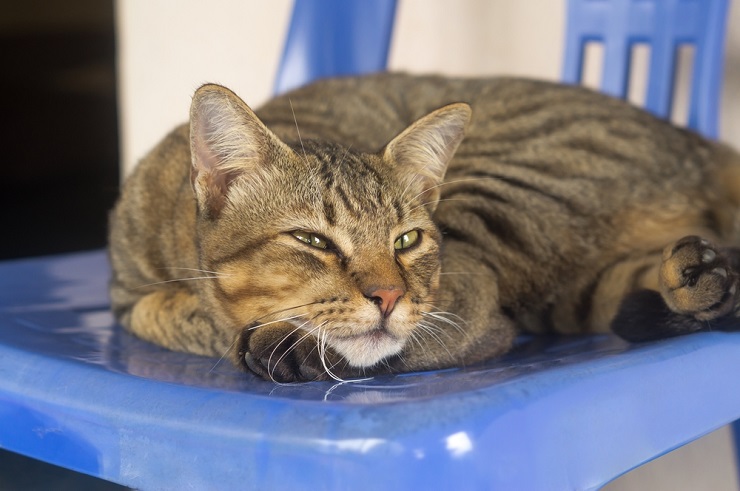
Weight loss, changes in feces, and increased appetite are all signs of exocrine pancreatic insufficiency.
The pancreas is an organ adjacent to the intestines that produces digestive enzymes that help your cat break down their food. Exocrine pancreatic insufficiency is where the pancreas fails to produce these enzymes leading to digestive upset.
Signs include weight loss, changes in feces, and increased appetite. Speak to your veterinarian if you notice these signs.
Change in Behavior
Some cats are naturally very clingy, especially if they are very closely bonded to their owner; however, if your cat has suddenly become more demanding of attention, it might mean something is wrong. Any sudden change in your cat’s behavior should prompt a trip to your veterinarian.
There are many different reasons your cat may have a behavioral change. Examples include the following.
7. Boredom
If your cat is actively seeking your attention, it may be that they are bored. A lack of mental stimulation can be a big problem in purely indoor cats.
If your cat is craving attention or showing signs of frustration like scratching or even a quick bite, think about ways to introduce more activity and playtime in their daily routine.
Puzzle feeders and interactive toys can be a great way to help get your cat’s brain working. There are many different styles; you can even make your own if you are on a budget.
These cat toys make your cat work for their food, which is much closer to their wild counterparts eating habits.
8. Pain
Pain or discomfort behavior in cats can manifest in many ways, such as hiding away, an unusual growl or aggression (your cat may hiss or scratch), or even seeking out attention and affection. Overt distress in painful cats is uncommon.
Knowing if your cat is experiencing a painful condition can be tricky, they won’t always have wounds or an obvious limp. An example would be arthritis which can manifest with subtle signs in cats.
Therefore, the first step is a vet visit if you have noticed something off with your cat at home. They may recommend blood tests or imaging such as x-rays to get to the bottom of what’s hurting your cat.
9. Stress and Anxiety
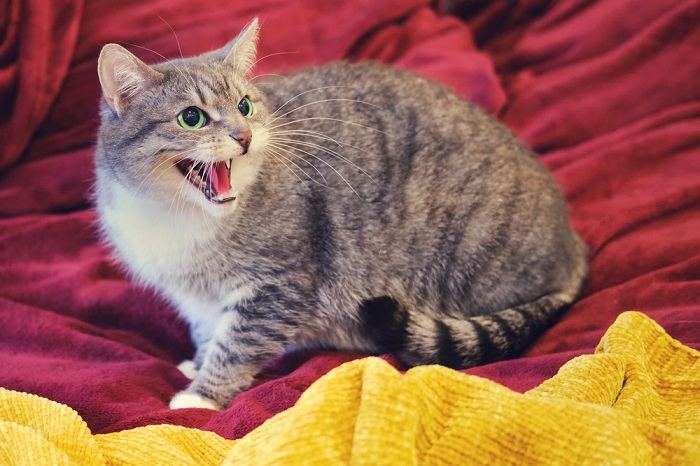
Attention-seeking behavior is common when cats are feeling stressed, fearful, or anxious.
Cats can show stress or anxiety behavior in many different forms, and becoming more clingy, or attention-seeking is one of them. Changes in urination behavior or not using the litter box is another common sign.
Stress can be caused by the simplest things in cats, such as a new cat in the neighborhood or having some home renovations done. There are many different excellent resources out there for managing stress and anxiety.
Some cats will require medication or the input of a licensed behaviorist. Still, it is often advisable to work with your veterinarian to rule out medical worries before assuming your cat suffers from a behavioral condition.
10. Neurological Disorders
Neurological diseases are those affecting the brain and nerves. The signs of brain disease can range from subtle behavioral changes to loss of senses or seizure activity. Brain disease can be caused by many things, from infections to cancer.
As a result, treatment options and prognosis can vary widely. While increasing demand for affection would be a rare symptom of brain disease, it sadly is still possible. Always consult your vet in the event of odd behavior.
What To Do if Your Cat Is Demanding More Attention
If you have noticed a change in your cat’s behavior, it is never the wrong thing to chat with your local veterinarian. They can work with you to rule out medical worries and refer you to a licensed behaviorist if needed.
Some cats may go through periods where they demand more attention from their owners without it being a cause for concern, but if you are worried, you should take a trip to your veterinary care provider.
Final Thoughts
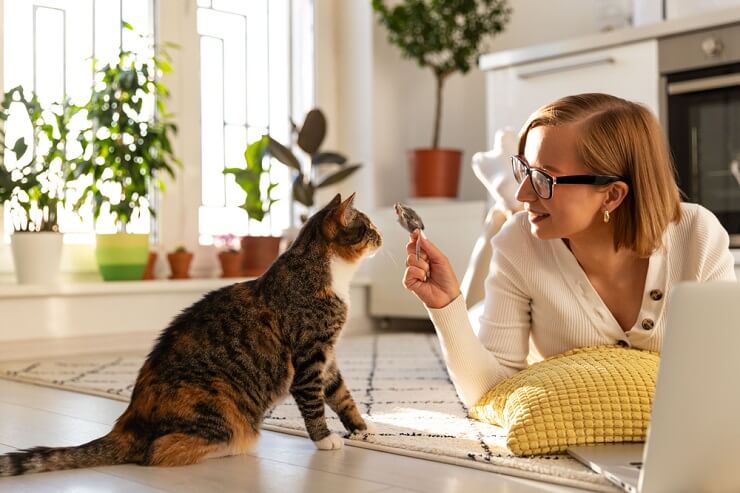
If your vet gives your cat the all clear, dole out more attention and play to help alleviate potential boredom.
In most cases, if your cat has the odd time of being more clingy or attention-seeking, it’s unlikely to be a significant cause for concern. However, if you ever notice that your cat has a significant increase in appetite or she has had a substantial change in character out of the blue, it is always a good idea to make an appointment with your local veterinarian.
This way, you can be sure there is nothing medically or behaviorally wrong with your kitty and enjoy those extra snuggles worry-free!
Also Read: 10 Signs You Might Have A Clingy Cat
Frequently Asked Questions
How do I get my cat to stop attention seeking?
The first step to decreasing attention-seeking behavior is understanding why your cat is doing it. It's important to speak to your veterinarian, who will work with you to rule out any medical problems. They can then provide you with advice and refer you to a licensed behaviorist if appropriate.
Why is my cat always meowing for attention?
If your cat is meowing at you constantly, you need to try to figure out what it is she’s asking for. Is she begging for food or begging for attention? Solving this question can help you narrow down the list of reasons why your cat may be doing this. Some examples are discussed in detail above.
Why is my cat being so clingy?
Some cats naturally are clingy in their behavior, especially if they are very bonded to their owner. However, if your cat suddenly becomes more clingy when previously they weren’t, this can signify a medical or behavioral problem. A behavior change should always prompt a visit to your veterinarian, who can work with you to figure out what’s happening with your cat.
-
Amat. M et al. (2015) Stressed in owned cats: behavioural changes and welfare implications. Journal of Feline Medicine and Surgery. DOI https://doi.org/10.1177/1098612X15590867 Retrieved 25th August 2022
-
Batchelor and German (2019) BSAVA Manual of Canine and Feline Gastroenterology. Chapter 7 pp46-48. DOI 10.22233/9781910443361-3e.7 Retrieved 25th August 2022
-
Peterson. M (2019) Hyperthryoidism in Animals. MSD Veterinary Manuals. Available at https://www.msdvetmanual.com/endocrine-system/the-thyroid-gland/hyperthyroidism-in-animals Retrieved 25th August 2022

